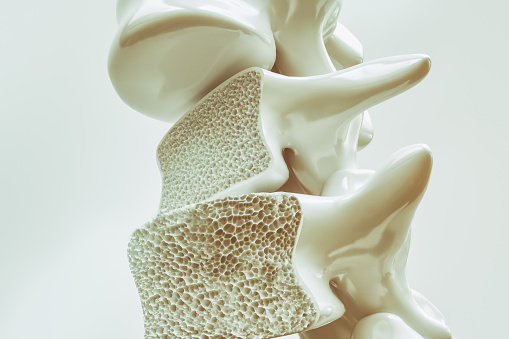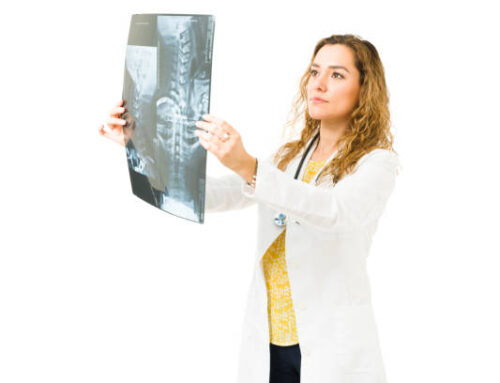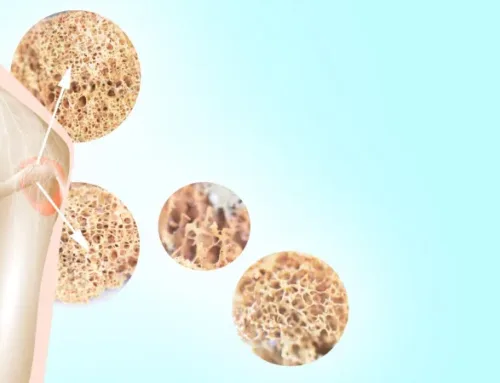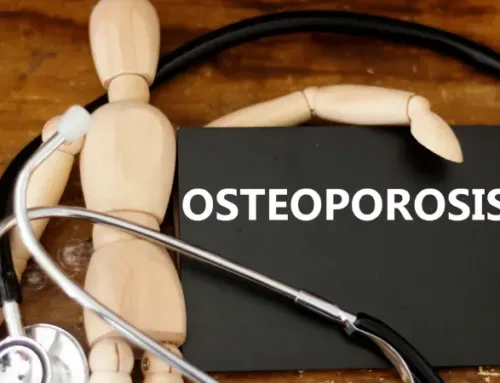Osteoporosis is a condition that affects the bones, making them weak and brittle. It is a common condition, especially among older adults, and can lead to fractures and other serious health problems. If you or someone you know has been diagnosed with osteoporosis, it is important to understand what it is, how it develops, and what can be done to prevent or manage it.
What is Osteoporosis?
It is a condition that causes bones to become weak and brittle. This happens when the body loses too much bone mass or doesn’t make enough new bone tissue. As a result, bones become thin and porous, making them more susceptible to fractures.
It can affect any bone in the body but most commonly affects the spine, hips, and wrists. It often develops slowly over time and may not cause any symptoms until a fracture occurs.
Who is at Risk for Osteoporosis?
It can affect anyone but is more common in women than men. Women are at higher risk because they have less bone tissue than men to begin with and lose bone mass more rapidly after menopause.
Other risk factors for osteoporosis include:
- – Age: The risk of it increases as you get older.
- – Family history: If your parents or siblings have had osteoporosis or fractures, you may be at higher risk.
- – Low body weight: People who are thin or have a small frame are at higher risk.
- – Smoking: Smoking can increase the rate of bone loss.
- – Lack of exercise: A sedentary lifestyle can lead to weaker bones.
- – Certain medications: Long-term use of corticosteroids or some anticonvulsant medications can increase the risk of osteoporosis.

How Can Osteoporosis be Prevented?
Preventing osteoporosis begins with building strong bones early in life. This includes getting enough calcium and vitamin D, which are essential for bone health. Calcium can be found in dairy products, leafy greens, and fortified foods.
Regular exercise is also important for maintaining bone health. Weight-bearing exercises like walking, jogging, and weightlifting can help build and maintain bone density.
Avoiding smoking and limiting alcohol consumption can also help prevent it.
How is Osteoporosis Treated?
If you have been diagnosed with it, there are several treatments available to help manage the condition and prevent fractures. These include:
- – Medications: There are several medications available that can slow down bone loss or increase bone density.
- – Hormone therapy: Estrogen therapy may be recommended for women who have gone through menopause to help protect against bone loss.
- – Lifestyle changes: Eating a healthy diet rich in calcium and vitamin D, getting regular exercise, quitting smoking, and limiting alcohol consumption can all help manage it.
In severe cases of it where fractures have occurred, surgery may be necessary to repair or replace damaged bones.
In conclusion, it is a common condition that affects the bones, making them weak and brittle. It is more common in women than men and can lead to serious health problems if left untreated. However, there are several steps you can take to prevent or manage it including getting enough calcium and vitamin D, exercising regularly, avoiding smoking and limiting alcohol consumption. If you have been diagnosed with it, talk to your doctor about treatment options that may be right for you.
What are 5 symptoms of osteoporosis?

5 Signs of Osteoporosis You use your arms to get out of a chair. If you need to use your arms to push off, it may be a sign of weakening muscles, which are a good predictor of weakening bones. ... You're taking thyroid medication. ... You're noticing some hearing loss. ... Your lower back hurts. ... You're frequently bloated or constipated
What are the three stages of osteoporosis?

The stages of Osteoporosis Osteoblasts vs Osteoclasts. Active Osteoblasts. ... Peak bone density and the first stages of osteopenia and osteoporosis. ... The second stage of osteopenia and osteoporosis. ... The third stage of osteopenia and osteoporosis. ... The fourth stage of osteopenia and osteoporosis.





